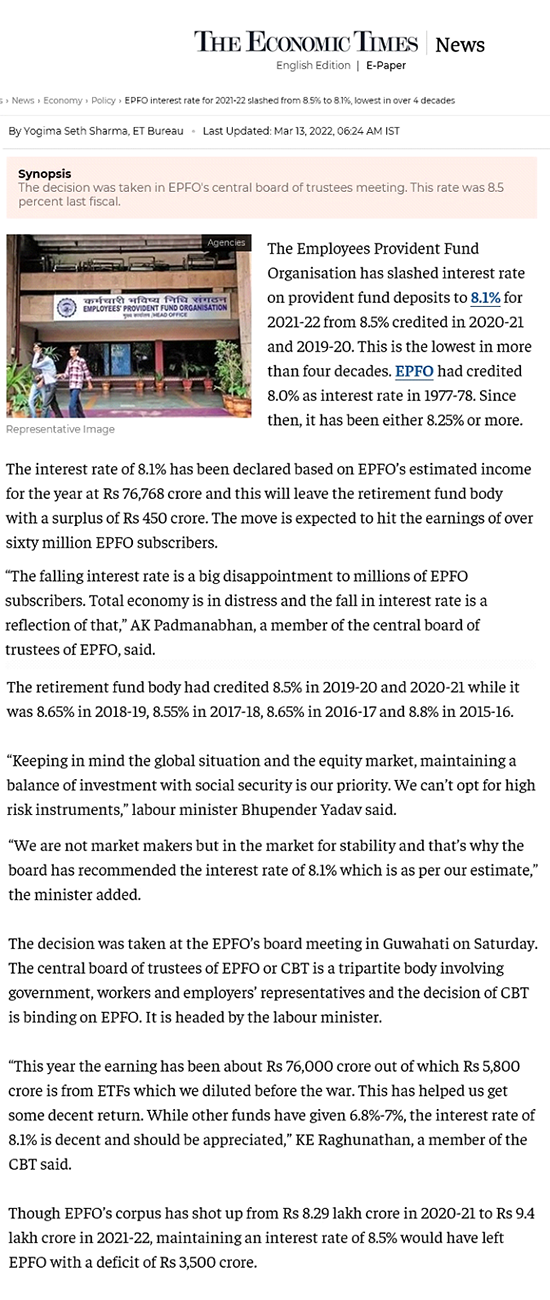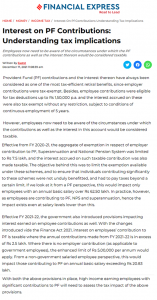1. Changes to Exempt PF actuarial reporting
The Institute of Actuaries of India recently conducted a webinar covering the new version 2.0 of Guidance Note 29 (GN29 v2.0) that covers elaborate guidance for actuaries working on actuarial valuation of Interest Rate Guarantee under Exempt Provident Fund Schemes. It will be effective for valuations performed on or after 31st March 2022.
The webinar mainly focused on the disclosure requirement for valuation Interest Rate Guarantee under Exempt Provident Fund Schemes. As per the guidance note the disclosure requirements are same as required by a Defined benefit obligation plan. The DBO for disclosure purpose will now be equal to Accumulated PF balance plus the Value of interest guarantee.
Also, there was an addition to the methodologies recommended for measuring interest rate guarantees –
- Deterministic modelling approach
- Cashflow modelling approach (new)
- Option pricing approach
- Stochastic modelling approach
To summarize the contents of the webinar –
- Additional disclosures – average account balances for both active and inactive employees and expected contributions to the plan in the next financial year need to be disclosed
- Cashflow modelling approach added to the list of valuation method
- Presentation changes for Liability reconciliation as described in the table below
| Defined benefit obligation as at opening | = Accumulated PF balance + Value of interest guarantee at beginning of period |
|---|---|
| Current service cost | = Employers contribution during the reporting period (estimated at beginning) + value of interest rate Guarantee on employer and employee contribution |
| Defined benefit obligation as at the end of period | = Accumulated PF balance + Value of interest guarantee at the end of period |
2. Interest Rate declared for Provident Fund plans for FY 21-22

3. Tax implications of Provident Fund Contributions in excess of Rs. 2.5 lacs effective FY 21-22

